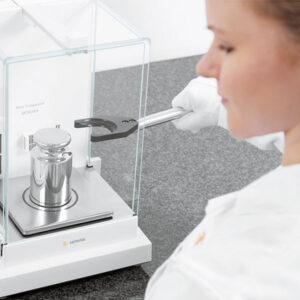
Improving your calibration routines is an ongoing process that requires attention to detail, proper planning, and the right resources.
Calibration is a crucial aspect of ensuring accuracy and reliability in measurement systems. Regular and precise calibration routines guarantee compliance with industry standards but also enhance the overall efficiency and longevity of your equipment. At The Scale People, we understand the importance of proper calibration and have designed our services to help you achieve optimal performance in your operations.
Here are 6 easy expert tips on how to improve your calibration routines:
1. Understand the Importance of Calibration
Calibration is the process of comparing the measurements of an instrument to a known standard to identify any deviations and correct them. This ensures that your equipment provides accurate and consistent results, which is critical in industries such as pharmaceuticals, food and beverage, manufacturing, and healthcare. Proper calibration will reduce costly errors, ensure product quality, and maintain compliance with regulatory standards.
2. Establish a Calibration Schedule
Regular calibration is essential to maintain the accuracy of your equipment. Establish a calibration schedule based on the manufacturer’s recommendations, industry standards, and the specific needs of your operations. Factors such as the frequency of use, environmental conditions, and criticality of measurements should be considered when determining the calibration interval.
3. Choose the Right Calibration Service Provider
Selecting an accredited and reputable calibration service provider is key to improving your calibration routines. The Scale People, with our ISO/IEC 17025:2017 accreditation through A2LA, offer comprehensive calibration services that adhere to the highest industry standards. Our expertise can help recommend if needed to ensure that your equipment is calibrated.
4. Train Your Staff
Properly trained staff are essential for the successful implementation of calibration routines. Ensure that your team is knowledgeable about the importance of calibration, understands how to use calibration equipment, and follows established procedures.
5. Document and Review Calibration Results
Keeping detailed records of all calibration activities is crucial for traceability and quality control. Document the date, time, personnel, equipment used, and results of each calibration. Regularly review these records to identify any trends or issues that may need to be addressed. This helps in continuous improvement of your calibration routines and ensures compliance with industry regulations.
6. Conduct Internal Audits and Assessments
Periodic internal audits and assessments of your calibration routines can help identify areas for improvement and ensure compliance with established procedures. Ask the experts for interval recommendations and proper standards.
Conclusion
Improving your calibration routines is an ongoing process that requires attention to detail, proper planning, and the right resources. The Scale People are here to support you with industry-leading calibration services and expertise to help you achieve the highest levels of precision and efficiency in your operations.
